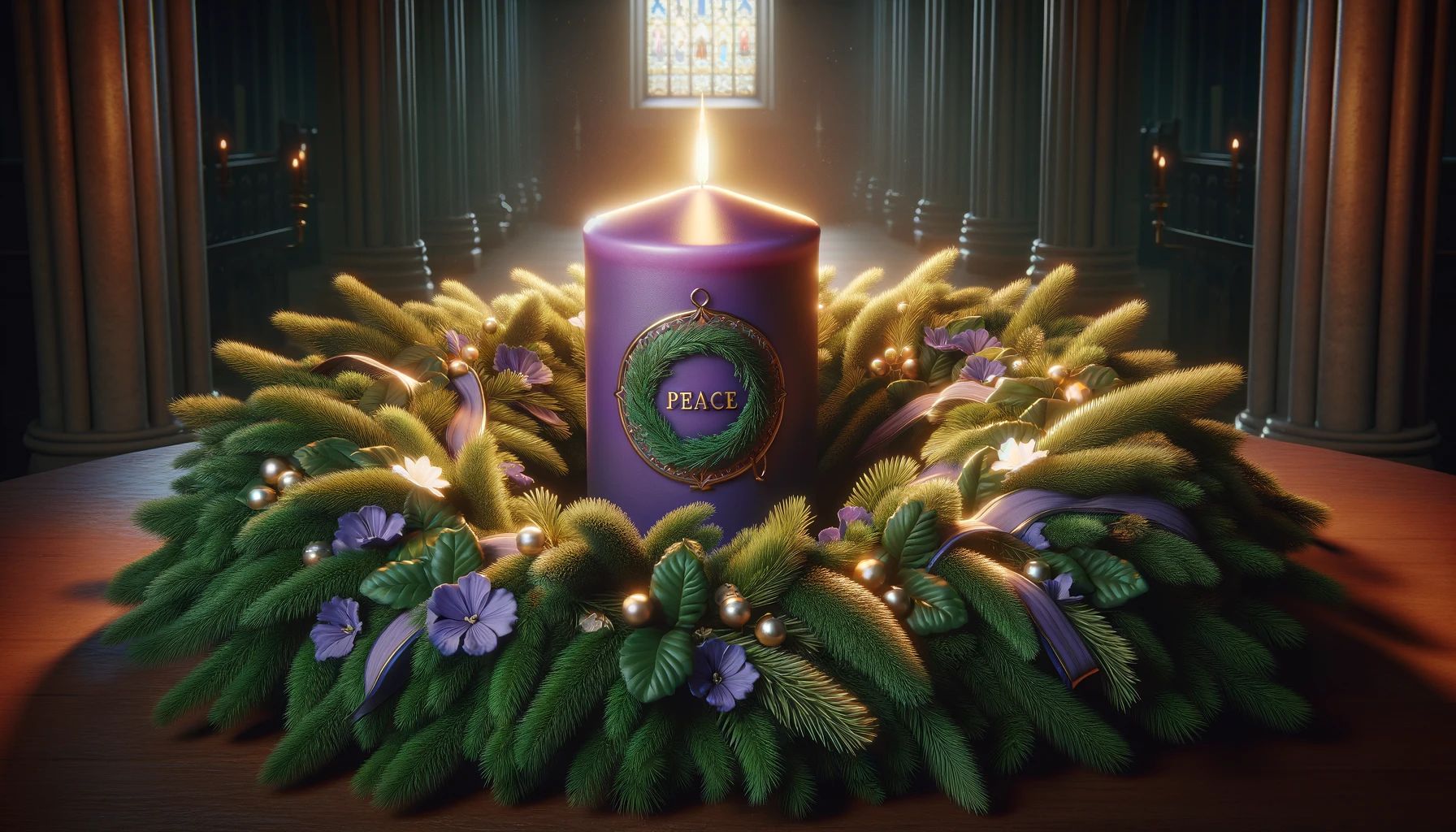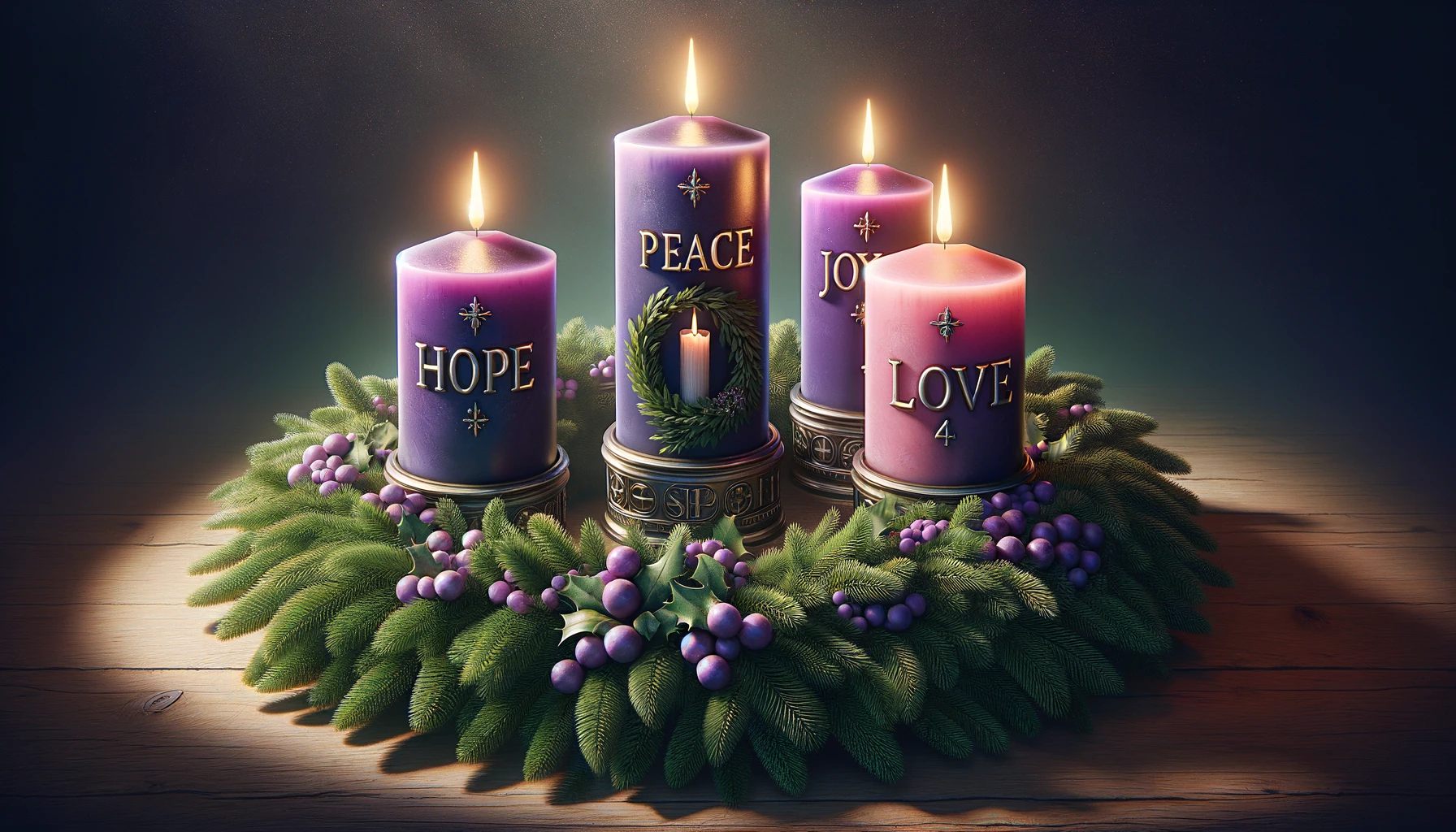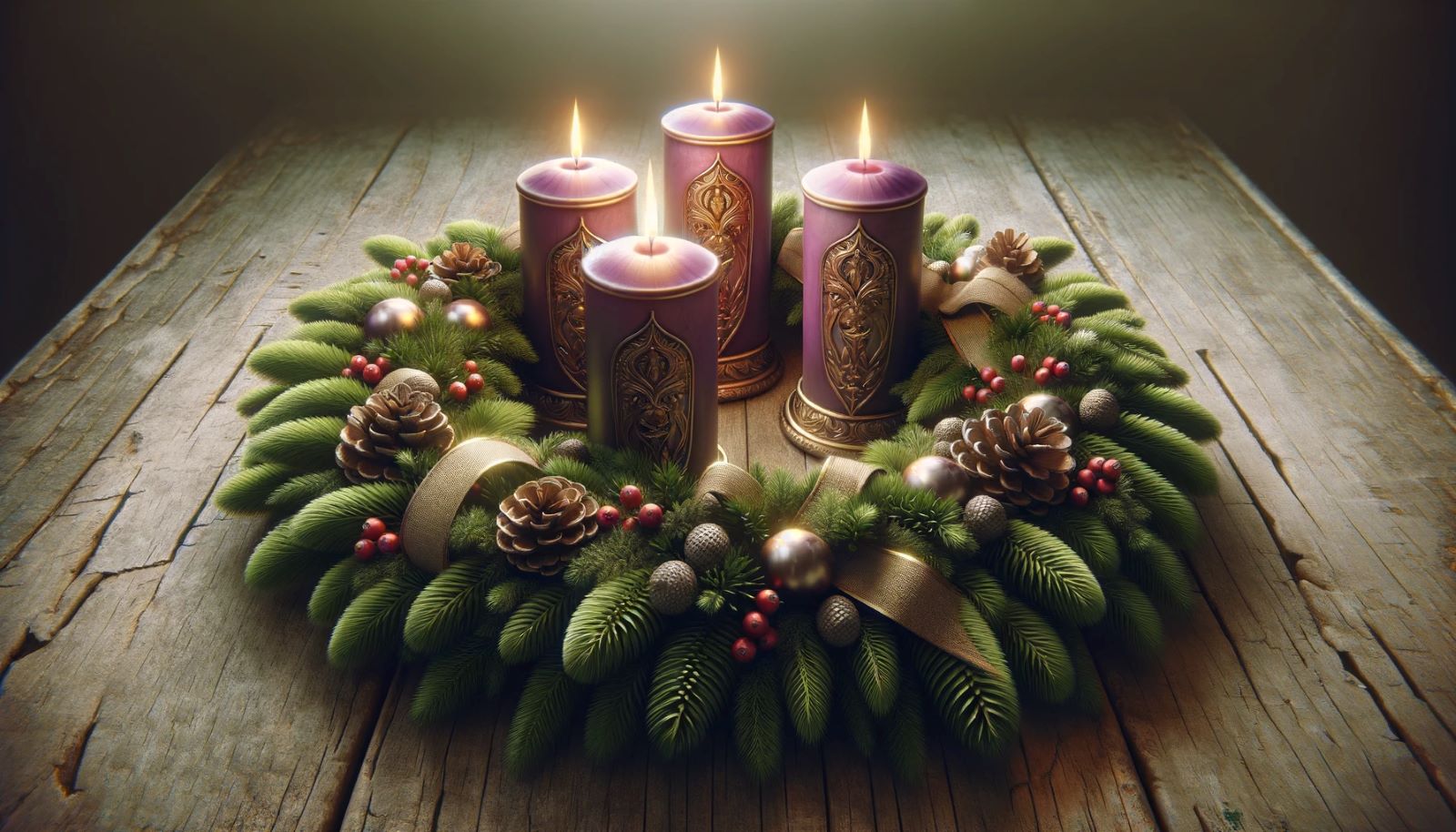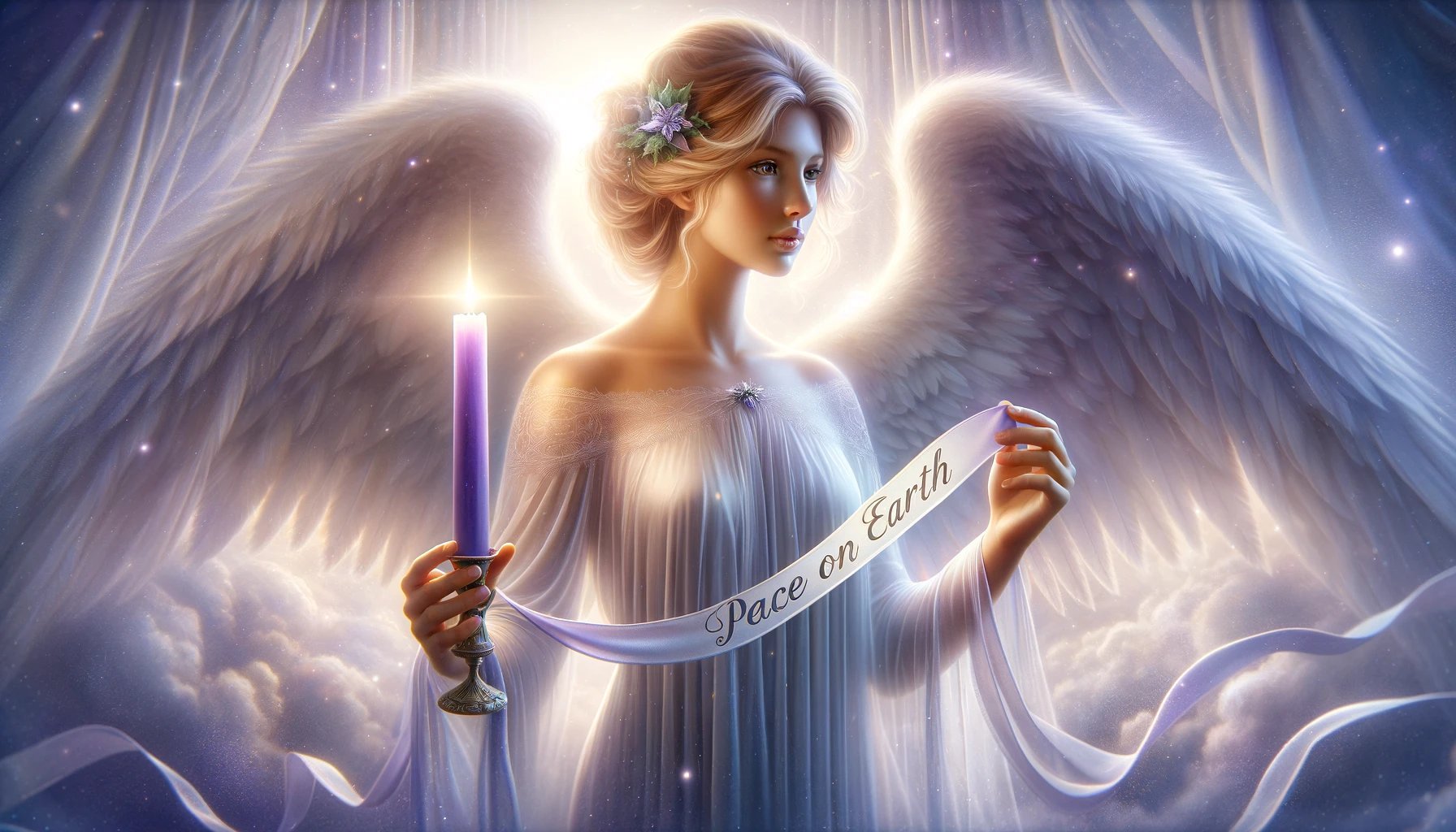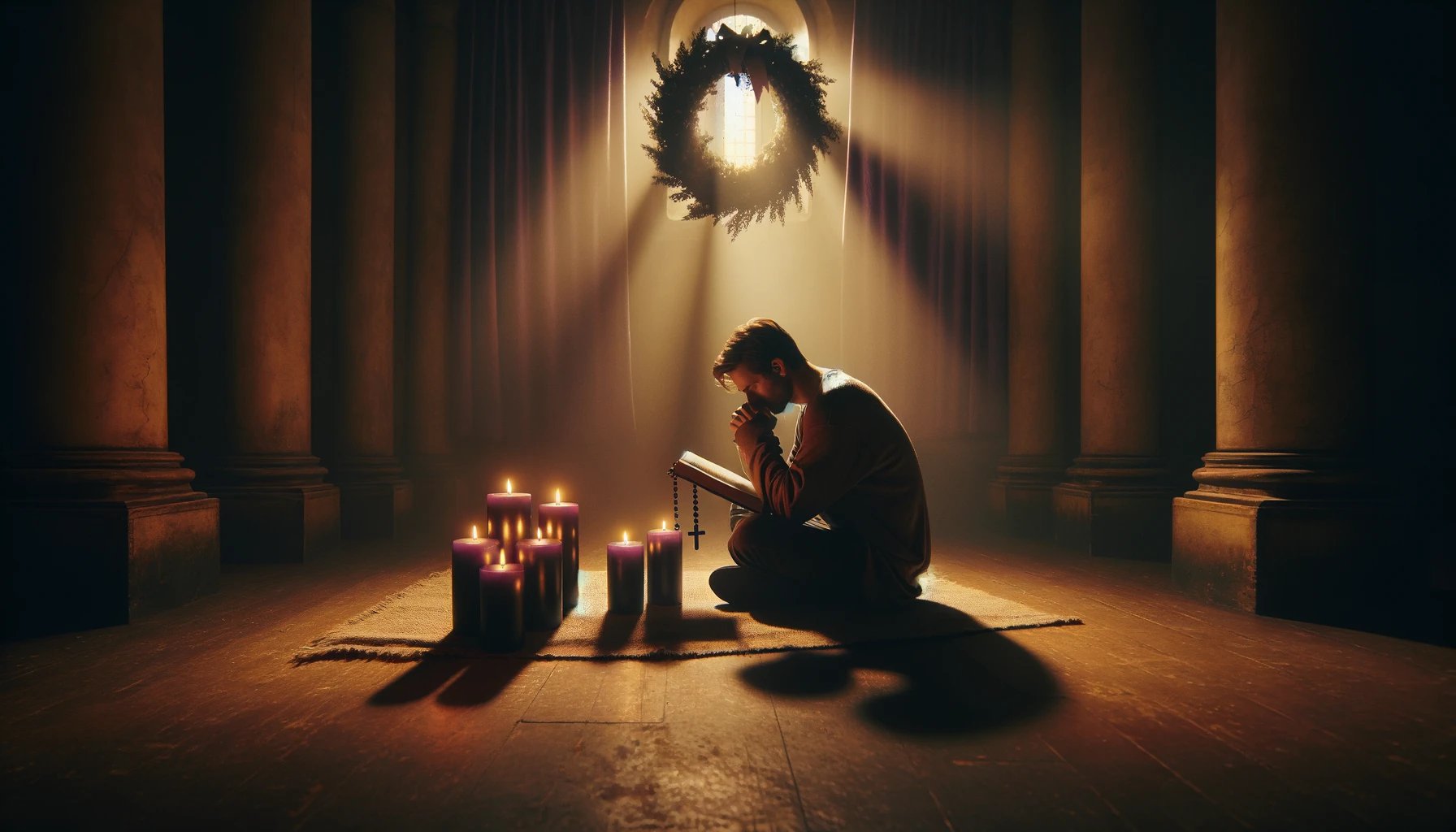Home>Special Themes>What Does Each Candle Mean For Advent


Special Themes
What Does Each Candle Mean For Advent
Published: February 13, 2024
Jason DeRose, Managing Editor at Christian.net, uses his expertise in religion and journalism to deepen understanding of faith's societal impacts. His editorial leadership, coupled with a strong academic background, enriches the platform’s diverse content, earning him recognition in both journalism and religious circles.
Discover the significance of each candle for Advent and explore the special themes associated with this sacred tradition. Learn the meaning behind the special themes of Advent candles.
(Many of the links in this article redirect to a specific reviewed product. Your purchase of these products through affiliate links helps to generate commission for Christian.net, at no extra cost. Learn more)
Table of Contents
Introduction
Advent, a time of anticipation and preparation, holds significant meaning for millions of people around the world. This sacred period, which typically begins on the fourth Sunday before Christmas, marks the start of the liturgical year in Western Christianity. It is a time of reflection, hope, and spiritual awakening as individuals and communities eagerly await the celebration of the birth of Jesus Christ.
During Advent, the lighting of candles holds profound symbolism, with each candle representing a different aspect of the spiritual journey towards Christmas. The lighting of these candles not only illuminates physical spaces but also serves as a beacon of hope, peace, joy, and love, guiding believers through the darkness towards the light of Christ's arrival.
As we delve into the significance of each candle, we embark on a journey of understanding and introspection, exploring the profound meanings that underpin this timeless tradition. Join us as we unravel the rich symbolism and deep spiritual significance of each candle, delving into the essence of hope, peace, joy, and love that permeates the Advent season.
Read more: What Does The Hope Advent Candle Mean
The First Candle: Hope
The lighting of the first candle of Advent symbolizes hope, serving as a powerful reminder of the anticipation and expectation of the coming Messiah. As the initial flicker of light illuminates the darkness, it represents the hope that Christ's arrival brings to the world. This candle, often known as the "Prophet's Candle," signifies the hope foretold by the prophets of old, heralding the promise of a Savior who would bring light into a world shrouded in darkness.
In a world often fraught with uncertainty, the concept of hope holds profound significance. It serves as a guiding light, offering solace and reassurance in times of despair. The first candle of Advent embodies this sentiment, encouraging believers to embrace the hope that Christ's birth represents. It symbolizes the unwavering faith in God's promises and the anticipation of the fulfillment of those promises through the birth of Jesus.
The color of the first candle is traditionally purple, representing penitence and royalty. This hue reflects the solemn yet regal nature of the season, underscoring the reverence and humility associated with the anticipation of Christ's birth. As the flame of the first candle dances in the darkness, it kindles a sense of optimism and renewal, inspiring individuals to look towards the future with faith and confidence.
Moreover, the first candle of Advent serves as a poignant reminder of the enduring resilience of the human spirit. It embodies the belief that, even in the face of adversity, there is always the possibility of a brighter tomorrow. This message resonates deeply with individuals, offering comfort and encouragement during challenging times.
As the first candle is lit during the Advent wreath ceremony, its radiance dispels the shadows of doubt and fear, infusing the surroundings with a sense of hope and promise. This act of lighting the candle becomes a symbolic gesture, uniting individuals in a shared sense of optimism and faith in the divine plan.
In essence, the first candle of Advent, representing hope, encapsulates the profound significance of the season. It serves as a beacon of light in the midst of darkness, inspiring believers to embrace the promise of a better future and to await the arrival of the Messiah with eager hearts and steadfast hope.
The Second Candle: Peace
The lighting of the second candle of Advent signifies the theme of peace, embodying the tranquil and harmonious essence of the season. Often referred to as the "Bethlehem Candle," it represents the peace brought by the Prince of Peace, Jesus Christ. As the gentle glow of the second candle permeates the surroundings, it serves as a poignant reminder of the profound tranquility and serenity that Christ's birth imparts to the world.
In a world marked by turmoil and discord, the concept of peace holds immense significance. The second candle of Advent, typically adorned in purple like the first, symbolizes the deep longing for reconciliation and harmony. It encapsulates the yearning for inner peace and the restoration of balance in a world fraught with conflict and unrest.
The symbolism of the second candle extends beyond the absence of conflict; it encompasses a holistic sense of well-being and spiritual calm. It speaks to the innermost desires of the human heart, resonating with the universal longing for a world where compassion and understanding prevail over discord and division.
Moreover, the lighting of the second candle serves as a call to action, urging individuals to become ambassadors of peace in their communities and beyond. It invites believers to emulate the peaceful and compassionate nature of Christ, fostering understanding and empathy in their interactions with others.
As the second candle is kindled, its radiance infuses the atmosphere with a sense of tranquility and hope, inspiring individuals to seek peaceful resolutions and to cultivate a spirit of unity and goodwill. This act of lighting the candle becomes a symbolic gesture, uniting individuals in a shared commitment to fostering peace and harmony in their lives and the world at large.
The symbolism of the second candle extends beyond the absence of conflict; it encompasses a holistic sense of well-being and spiritual calm. It speaks to the innermost desires of the human heart, resonating with the universal longing for a world where compassion and understanding prevail over discord and division.
In essence, the second candle of Advent, representing peace, serves as a poignant reminder of the transformative power of tranquility and harmony. It encourages believers to embrace the peaceful spirit of the season and to become catalysts for positive change, spreading the message of peace and goodwill to all.
The Third Candle: Joy
The lighting of the third candle of Advent heralds the arrival of joy, infusing the season with an exuberant and celebratory spirit. Often known as the "Shepherd's Candle," it symbolizes the joy experienced by the shepherds upon receiving the news of the birth of Jesus. As the warm glow of the third candle illuminates the surroundings, it serves as a radiant reminder of the profound and infectious joy that permeates the Advent season.
In a world often characterized by challenges and uncertainties, the concept of joy holds immense significance. The third candle of Advent, traditionally adorned in pink, represents the palpable sense of rejoicing that accompanies the anticipation of Christ's birth. It embodies the jubilant proclamation of the good news and the overwhelming sense of fulfillment that arises from the imminent arrival of the Savior.
The symbolism of the third candle extends beyond fleeting happiness; it encapsulates a deep and abiding sense of inner joy that transcends circumstances. It speaks to the resilience of the human spirit, inspiring individuals to find moments of joy and gratitude amidst the complexities of life. The vibrant hue of the candle serves as a visual reminder of the unbridled joy that emanates from the promise of redemption and renewal.
Moreover, the lighting of the third candle serves as a call to embrace joy as a transformative force, uplifting hearts and inspiring acts of kindness and generosity. It invites believers to embody the joyous spirit of the season, spreading warmth and cheer to those around them. As the third candle is kindled, its radiant glow infuses the atmosphere with a sense of jubilation and optimism, inspiring individuals to celebrate the blessings in their lives and to share the gift of joy with others.
The act of lighting the third candle becomes a symbolic gesture, uniting individuals in a shared celebration of the profound joy that accompanies the Advent season. It serves as a poignant reminder of the enduring hope and promise that Christ's birth represents, igniting a sense of exultation and gratitude in the hearts of believers.
In essence, the third candle of Advent, representing joy, serves as a radiant beacon of celebration and gratitude. It encourages believers to embrace the joyous spirit of the season and to become ambassadors of hope and cheer, spreading the transformative power of joy to all those they encounter.
The Fourth Candle: Love
The lighting of the fourth candle of Advent heralds the profound and transformative theme of love, infusing the season with an unparalleled sense of compassion and devotion. Often referred to as the "Angel's Candle," it symbolizes the boundless love embodied by the angels who proclaimed the miraculous birth of Jesus. As the gentle radiance of the fourth candle permeates the surroundings, it serves as a poignant reminder of the enduring and unconditional love that defines the Advent season.
In a world often marked by division and discord, the concept of love holds immense significance. The fourth candle of Advent, traditionally adorned in purple like the preceding candles, represents the profound and all-encompassing love that emanates from the anticipation of Christ's birth. It embodies the selfless and redemptive nature of divine love, underscoring the transformative power of compassion and empathy.
The symbolism of the fourth candle extends beyond romantic or familial love; it encapsulates a universal and inclusive love that transcends barriers and unites humanity. It speaks to the intrinsic value of every individual, resonating with the timeless message of love as the cornerstone of faith and spiritual fulfillment. The deep hue of the candle serves as a visual reminder of the enduring love that emanates from the promise of salvation and the unbreakable bond between God and humanity.
Moreover, the lighting of the fourth candle serves as a call to embrace love as a guiding principle, inspiring acts of kindness, forgiveness, and reconciliation. It invites believers to embody the selfless and compassionate nature of Christ, extending love and grace to those around them. As the fourth candle is kindled, its radiant glow infuses the atmosphere with a sense of warmth and tenderness, inspiring individuals to embrace the transformative power of love and to share its boundless embrace with others.
The act of lighting the fourth candle becomes a symbolic gesture, uniting individuals in a shared celebration of the profound love that defines the Advent season. It serves as a poignant reminder of the enduring hope and promise that Christ's birth represents, igniting a sense of compassion and unity in the hearts of believers.
In essence, the fourth candle of Advent, representing love, serves as a radiant beacon of compassion and unity. It encourages believers to embrace the loving spirit of the season and to become ambassadors of grace and empathy, spreading the transformative power of love to all those they encounter.
Read more: What Does The Love Advent Candle Mean
The Fifth Candle: Christ (optional)
The lighting of the fifth candle of Advent, often referred to as the "Christ Candle," represents the culmination of the Advent journey and the joyous celebration of the birth of Jesus Christ. While the use of the fifth candle is optional in some traditions, its significance is profound, symbolizing the arrival of the long-awaited Messiah and the embodiment of divine light and salvation.
When the fifth candle is kindled, its radiant glow serves as a powerful reminder of the central focus of the Advent season: the birth of Jesus Christ. This candle, typically adorned in white to signify purity and holiness, stands as a beacon of hope and redemption, illuminating the path towards spiritual renewal and rebirth. Its optional inclusion in the Advent wreath ceremony marks a joyous proclamation of the fulfillment of God's promise and the dawning of a new era of grace and salvation.
The symbolism of the Christ Candle extends beyond the historical event of Christ's birth; it encapsulates the enduring significance of His presence in the lives of believers. As the fifth candle radiates its warm light, it invites individuals to reflect on the profound impact of Christ's teachings and the transformative power of His love and sacrifice. It serves as a poignant reminder of the eternal hope and promise that Christ's birth represents, igniting a sense of reverence and gratitude in the hearts of believers.
Moreover, the lighting of the Christ Candle serves as a call to embrace the presence of Christ in the world today, inspiring individuals to embody His compassion, grace, and unwavering faith. It invites believers to emulate the selfless and redemptive nature of Christ, extending His love and light to those around them. As the Christ Candle is kindled, its radiant glow infuses the atmosphere with a sense of reverence and awe, inspiring individuals to celebrate the transformative power of Christ's presence and to share His boundless love with others.
In essence, the optional fifth candle of Advent, representing Christ, serves as a radiant beacon of spiritual renewal and divine grace. It encourages believers to embrace the profound significance of Christ's birth and to become ambassadors of His enduring love and compassion, spreading the transformative power of His presence to all those they encounter.
Conclusion
As we conclude our exploration of the profound symbolism and spiritual significance of each candle in the Advent season, we are reminded of the timeless themes of hope, peace, joy, and love that permeate this sacred time of anticipation and preparation. The lighting of each candle serves as a poignant reminder of the enduring promises and transformative power of the Advent season, inviting believers to embark on a journey of introspection and spiritual renewal.
The first candle, representing hope, kindles a sense of optimism and renewal, inspiring individuals to look towards the future with faith and confidence. It serves as a beacon of light in the midst of darkness, encouraging believers to embrace the promise of a better tomorrow and to await the arrival of the Messiah with eager hearts and steadfast hope.
The second candle, symbolizing peace, invites individuals to become ambassadors of tranquility and harmony, fostering understanding and empathy in their interactions with others. It embodies the yearning for inner peace and the restoration of balance in a world fraught with conflict and unrest, inspiring believers to seek peaceful resolutions and to cultivate a spirit of unity and goodwill.
The third candle, heralding joy, infuses the season with an exuberant and celebratory spirit, encouraging believers to celebrate the blessings in their lives and to share the gift of joy with others. It serves as a radiant beacon of celebration and gratitude, inspiring individuals to embrace the joyous spirit of the season and to become ambassadors of hope and cheer, spreading the transformative power of joy to all those they encounter.
The fourth candle, representing love, serves as a radiant beacon of compassion and unity, encouraging believers to embrace the loving spirit of the season and to become ambassadors of grace and empathy, spreading the transformative power of love to all those they encounter. It embodies the enduring and unconditional love that defines the Advent season, inspiring acts of kindness, forgiveness, and reconciliation.
The optional fifth candle, symbolizing Christ, represents the culmination of the Advent journey and the joyous celebration of the birth of Jesus Christ. Its inclusion marks a joyous proclamation of the fulfillment of God's promise and the dawning of a new era of grace and salvation, inviting individuals to reflect on the profound impact of Christ's teachings and the transformative power of His love and sacrifice.
In essence, the Advent season, with its rich tapestry of symbolism and spiritual significance, invites believers to embrace the enduring promises of hope, peace, joy, and love, and to embody these virtues in their daily lives. As the candles of the Advent wreath illuminate the path towards Christmas, they serve as a timeless reminder of the profound and transformative power of faith, guiding believers through the darkness towards the light of Christ's arrival.

